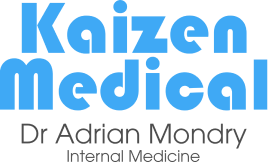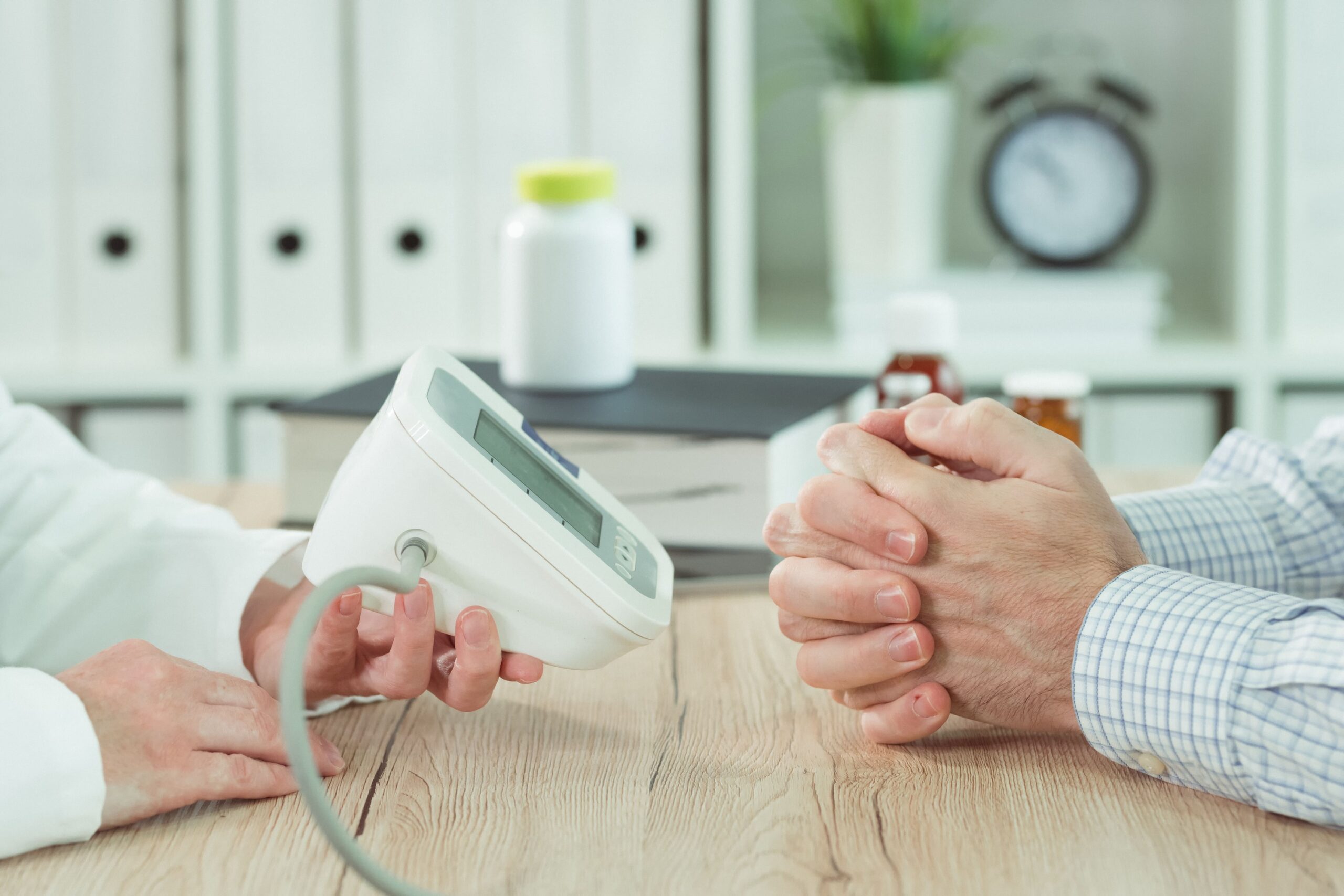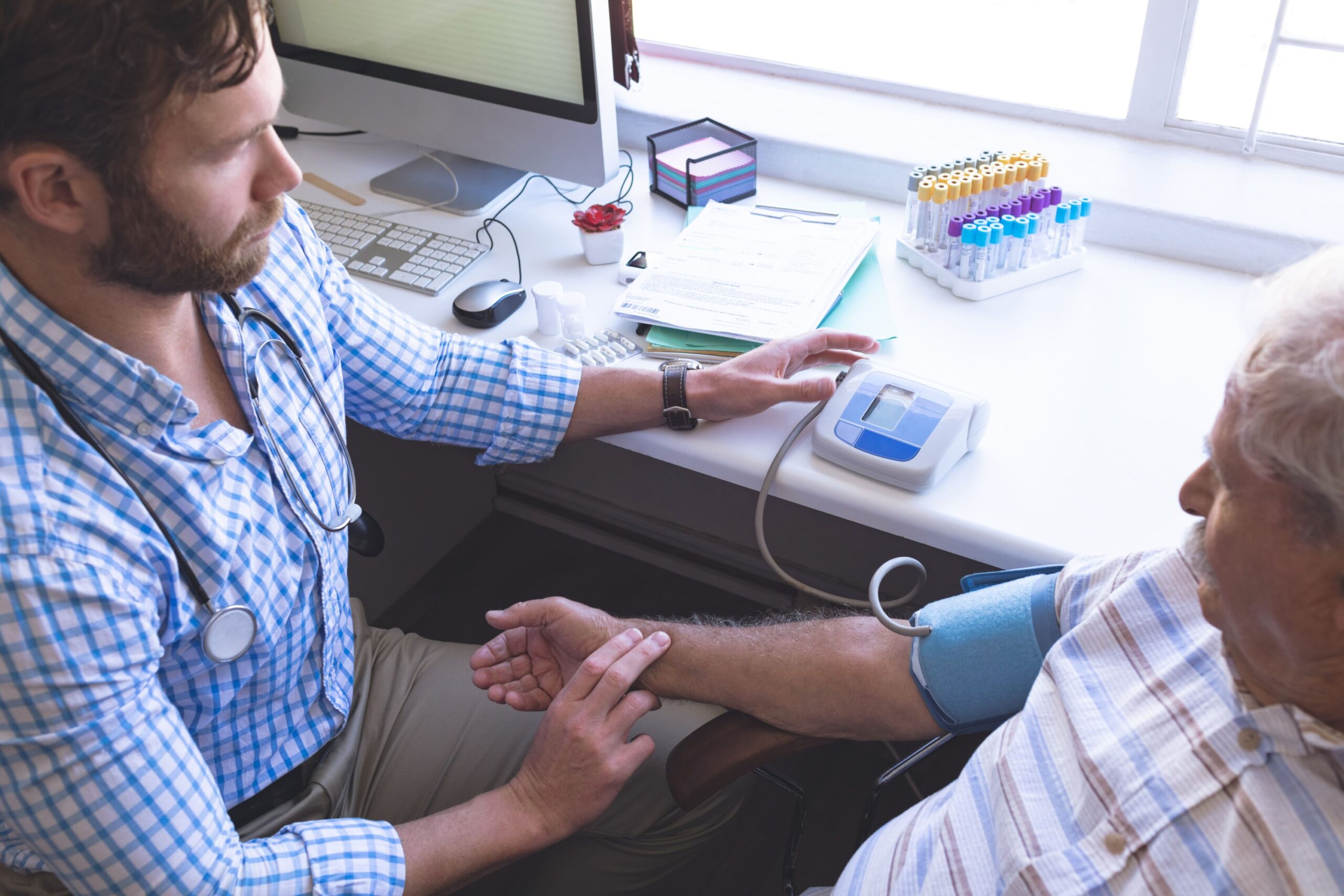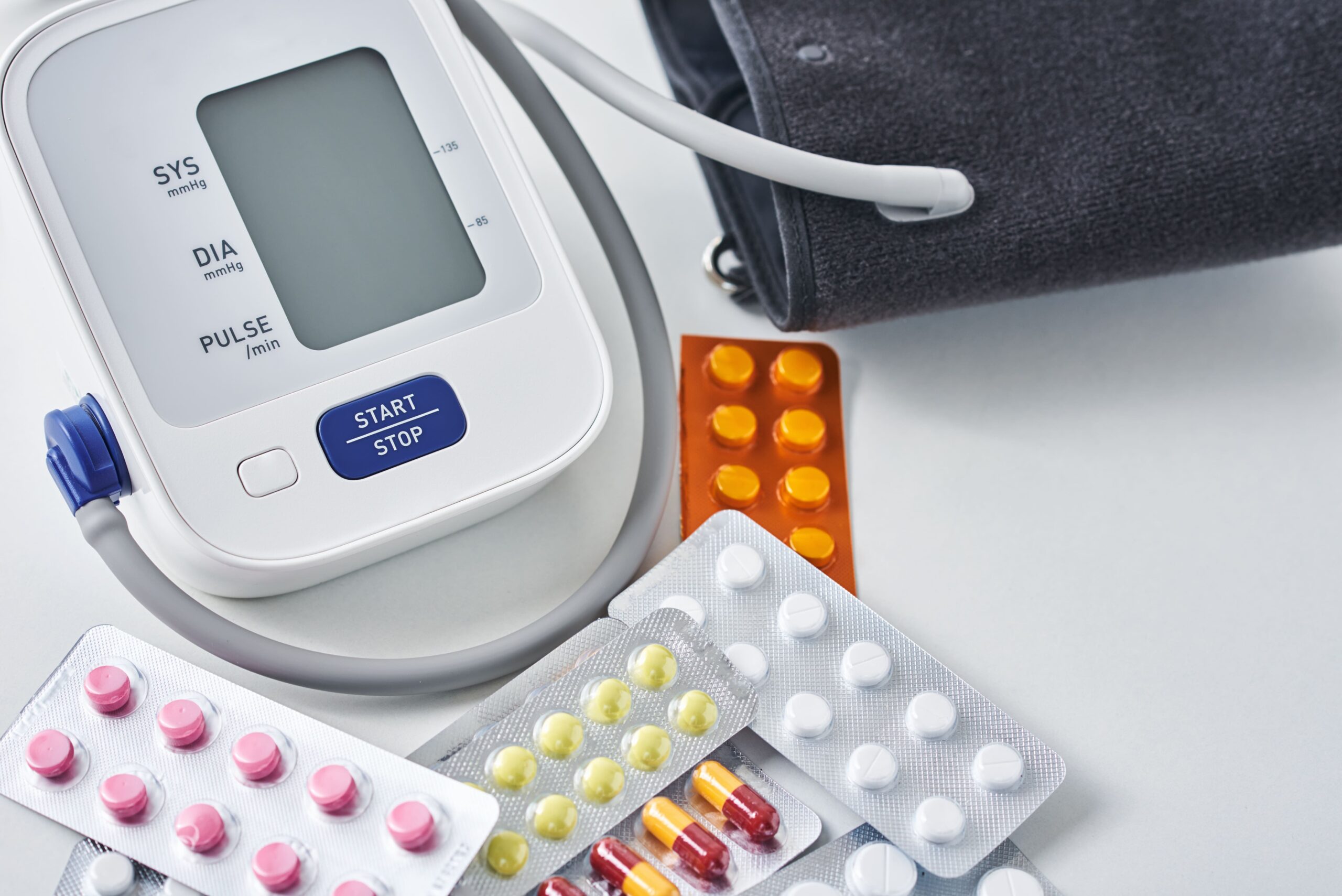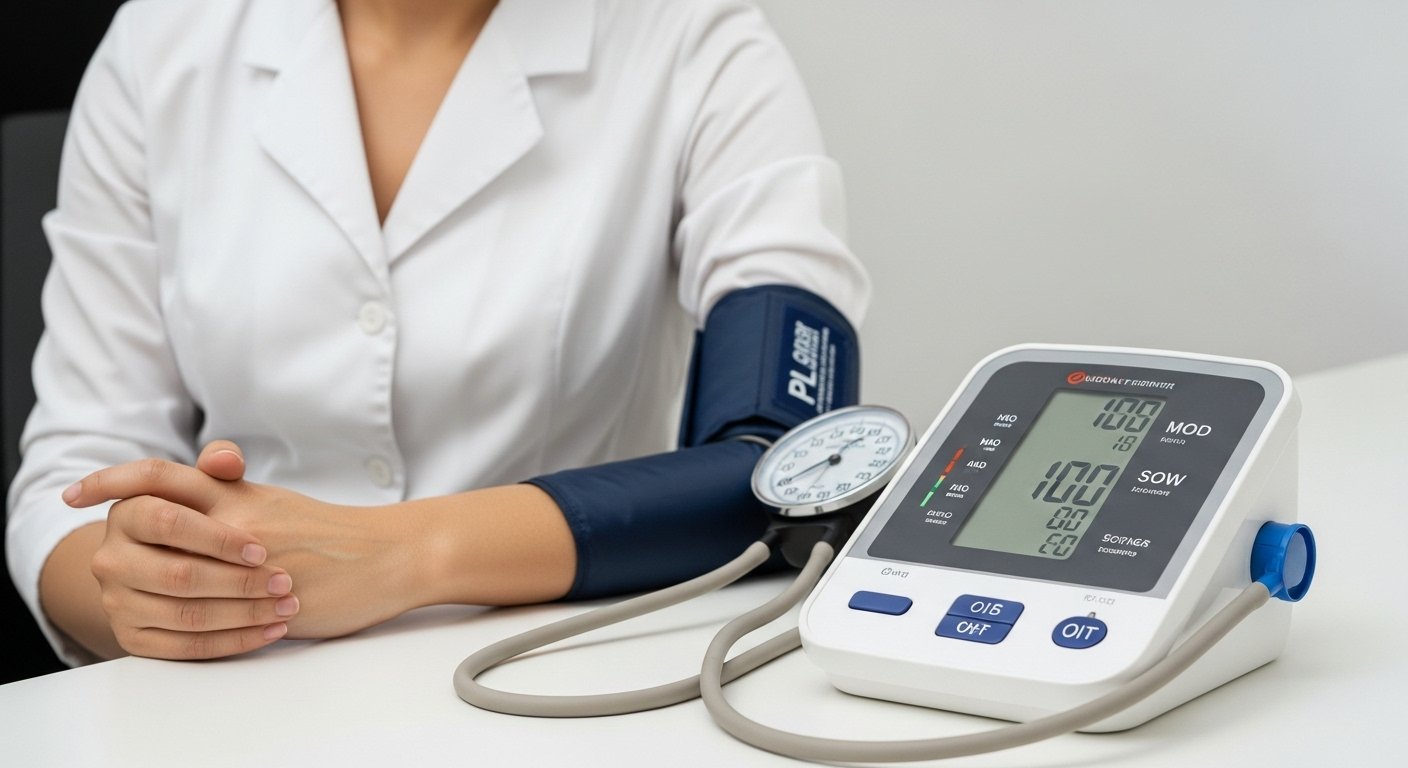Blood pressure above 140/90 mmHg damages blood vessels throughout your body, even when you feel perfectly fine. This silent damage accumulates over years, affecting every organ system from your brain to your kidneys. Unlike conditions that announce themselves with pain or discomfort, hypertension works quietly until serious complications emerge.
The mechanics are straightforward: elevated pressure forces your heart to pump harder while simultaneously damaging the delicate lining of your arteries. This dual assault creates a cascade of problems that compound over time. Understanding these specific mechanisms helps explain why medication adherence and lifestyle modifications matter even when symptoms are absent.
Heart Damage from Sustained High Blood Pressure
Your heart muscle thickens when forced to pump against elevated pressure, similar to any muscle that works against resistance. This thickening, called left ventricular hypertrophy, reduces the heart’s efficiency and flexibility. The thickened muscle requires more oxygen but receives less due to compressed blood vessels within the heart wall.
Coronary arteries feeding your heart muscle develop atherosclerosis faster under high pressure conditions. The constant force damages the arterial lining, creating sites where cholesterol accumulates. These plaques narrow the arteries and can rupture suddenly, causing heart attacks even in people who previously felt healthy.
Heart failure develops when the thickened, stiffened heart can no longer pump effectively. Initially, the heart compensates by beating faster and retaining fluid. Eventually, these compensatory mechanisms fail, leading to shortness of breath, leg swelling, and fatigue. The progression from hypertension to heart failure typically takes years but becomes irreversible at advanced stages.
Atrial fibrillation occurs more frequently in people with untreated hypertension. The elevated pressure stretches the heart’s upper chambers, disrupting normal electrical signals. This irregular heartbeat increases stroke risk fivefold and often requires lifelong anticoagulation therapy.
Brain and Stroke Complications
Untreated hypertension damages brain blood vessels through multiple mechanisms. Small vessels deep in the brain develop thickened walls and reduced blood flow, causing white matter lesions visible on MRI scans. These changes correlate with cognitive decline, even before any stroke occurs.
Hemorrhagic strokes happen when weakened blood vessels rupture under pressure. The bleeding compresses surrounding brain tissue, causing immediate damage. Common sites include the basal ganglia and thalamus, areas controlling movement and sensation. Recovery from hemorrhagic stroke is often incomplete, with many survivors experiencing permanent disability.
Ischemic strokes result from blocked arteries, either from local clot formation or emboli from the heart. Hypertension accelerates atherosclerosis in the carotid arteries and smaller brain vessels. The combination of vessel narrowing and increased clotting tendency creates ideal conditions for stroke.
Vascular dementia develops gradually as multiple small strokes accumulate. Each event may go unnoticed, but the cumulative effect impairs memory, judgment, and daily functioning. Brain imaging reveals multiple small infarcts and extensive white matter disease in advanced cases.
Kidney Function Deterioration
Your kidneys filter approximately 180 liters of blood daily through millions of tiny blood vessels called glomeruli. High blood pressure damages these delicate structures, reducing their filtering capacity. The earliest sign appears as microalbuminuria – tiny amounts of protein leaking into urine.
Progressive kidney damage manifests through declining glomerular filtration rate (GFR). Normal GFR exceeds 90 mL/min/1.73m², but untreated hypertension can reduce this to below 60, indicating chronic kidney disease. Once GFR falls below 15, dialysis or transplantation becomes necessary.
💡 Did You Know?
Kidney damage from hypertension creates a vicious cycle – damaged kidneys release hormones that further elevate blood pressure, accelerating their own destruction.
The relationship between hypertension and kidney disease works both ways. Damaged kidneys retain sodium and water, worsening blood pressure control. They also produce excess renin, activating hormonal systems that constrict blood vessels. This bidirectional relationship makes early intervention important.
Eye Damage and Vision Loss
Hypertensive retinopathy develops as high pressure damages the tiny blood vessels supplying your retina. Early changes include arteriovenous nicking, where thickened arteries compress crossing veins. Cotton-wool spots appear as nerve fibers die from inadequate blood supply.
Advanced retinopathy features flame-shaped hemorrhages, hard exudates from leaked lipids, and papilledema from optic nerve swelling. These changes often occur without symptoms until vision loss becomes apparent. Regular eye examinations can detect damage before permanent vision loss occurs.
Retinal vein occlusion happens when compressed veins become blocked, causing sudden vision loss. The blockage leads to retinal swelling, hemorrhages, and potential permanent damage. Treatment options exist but work best when initiated promptly.
Hypertensive choroidopathy affects the layer beneath the retina, causing fluid accumulation and retinal detachment. This condition typically occurs with severely elevated blood pressure and may reverse with aggressive treatment.
Blood Vessel Damage Throughout the Body
Arterial walls consist of three layers that work together to maintain proper blood flow. Chronic high pressure damages the innermost layer (endothelium), triggering inflammation and atherosclerosis. The middle muscular layer thickens, reducing vessel flexibility. The outer layer develops fibrosis, further stiffening the artery.
Aortic aneurysms form when vessel walls weaken under constant pressure. The aorta, your body’s largest artery, bears the full force of each heartbeat. Aneurysms typically develop in the abdominal segment and grow silently until rupture causes life-threatening internal bleeding.
Peripheral artery disease results from atherosclerosis in leg arteries. Symptoms include leg pain with walking (claudication), slow-healing wounds, and in severe cases, tissue death requiring amputation. The same process affecting leg arteries likely occurs throughout the body.
⚠️ Important Note
Sudden severe chest or back pain in someone with untreated hypertension may indicate aortic dissection – a medical emergency requiring immediate hospital evaluation.
What Our Internal Medicine Specialist Says
Clinical experience shows that patients often feel well despite blood pressures exceeding 160/100 mmHg. This absence of symptoms leads many to discontinue medications or skip appointments. However, organ damage accumulates silently during these periods of uncontrolled pressure.
Modern blood pressure medications work through different mechanisms – ACE inhibitors protect the heart and kidneys, calcium channel blockers relax blood vessels, and diuretics reduce fluid overload. Combining medications at lower doses often achieves better control with fewer side effects than maximizing single drugs.
Lifestyle modifications complement medication but rarely replace it entirely once hypertension is established. Salt restriction, weight loss, and regular exercise each reduce systolic pressure by 5-10 mmHg. While meaningful, these reductions usually cannot normalize significantly elevated pressures without medication.
Home blood pressure monitoring provides valuable data between clinic visits. Readings taken at home often reflect true blood pressure better than clinic measurements affected by “white coat” effect. Digital monitors with arm cuffs provide accurate readings when used correctly.
Putting This Into Practice
- Check your blood pressure at home twice daily – morning before medications and evening before dinner, recording all readings
- Take prescribed medications at the same time each day, using pill organizers or phone alarms as reminders
- Reduce sodium intake by avoiding processed foods, reading labels, and cooking with herbs instead of salt
- Schedule regular follow-ups every 3-6 months to adjust medications based on blood pressure trends and organ function tests
- Monitor for medication side effects like dizziness, cough, or ankle swelling, reporting these rather than stopping medications independently
When to Seek Professional Help
- Blood pressure readings consistently above 140/90 mmHg despite lifestyle changes
- Systolic pressure exceeding 180 or diastolic above 120 (hypertensive urgency)
- Chest pain, severe headache, or vision changes with elevated blood pressure
- Shortness of breath, especially when lying flat
- Leg swelling that leaves indentations when pressed
- Persistent dry cough after starting ACE inhibitors
- Dizziness or near-fainting with position changes
- Difficulty maintaining erection after starting blood pressure medications
Commonly Asked Questions
How quickly does organ damage occur with untreated hypertension?
Organ damage begins within months of sustained elevation but progresses slowly over years. Microscopic kidney and blood vessel changes appear first, followed by detectable heart thickening. Clinical complications like stroke or heart failure typically develop after years of uncontrolled pressure, though severe hypertension can cause acute events sooner.
Can organ damage from hypertension be reversed?
Early changes like mild left ventricular hypertrophy and microalbuminuria often improve with blood pressure control. Advanced damage including established kidney disease, heart failure, and vascular dementia cannot be reversed but may stabilize with treatment.
Why do I need medication if I feel fine?
Hypertension damages organs silently for years before symptoms appear. By the time symptoms develop, significant irreversible damage has often occurred. Medications prevent this silent progression, preserving organ function even when you feel well. Think of it as preventive maintenance rather than symptom treatment.
What blood pressure level causes immediate danger?
Blood pressure above 180/120 mmHg requires urgent evaluation, especially with symptoms like chest pain, shortness of breath, or neurological changes. However, even moderately elevated pressure (140-160/90-100) causes cumulative damage over time. Both acute crises and chronic elevation require attention.
Next Steps
Untreated hypertension silently damages every organ system through sustained vascular injury. Early detection and consistent management prevent irreversible complications like stroke, heart failure, and kidney disease. Modern treatments effectively control blood pressure when taken regularly and adjusted based on response.
If you’re experiencing elevated blood pressure readings or haven’t checked your blood pressure recently, our MOH-accredited internal medicine specialists can provide comprehensive evaluation and personalized treatment plans.
